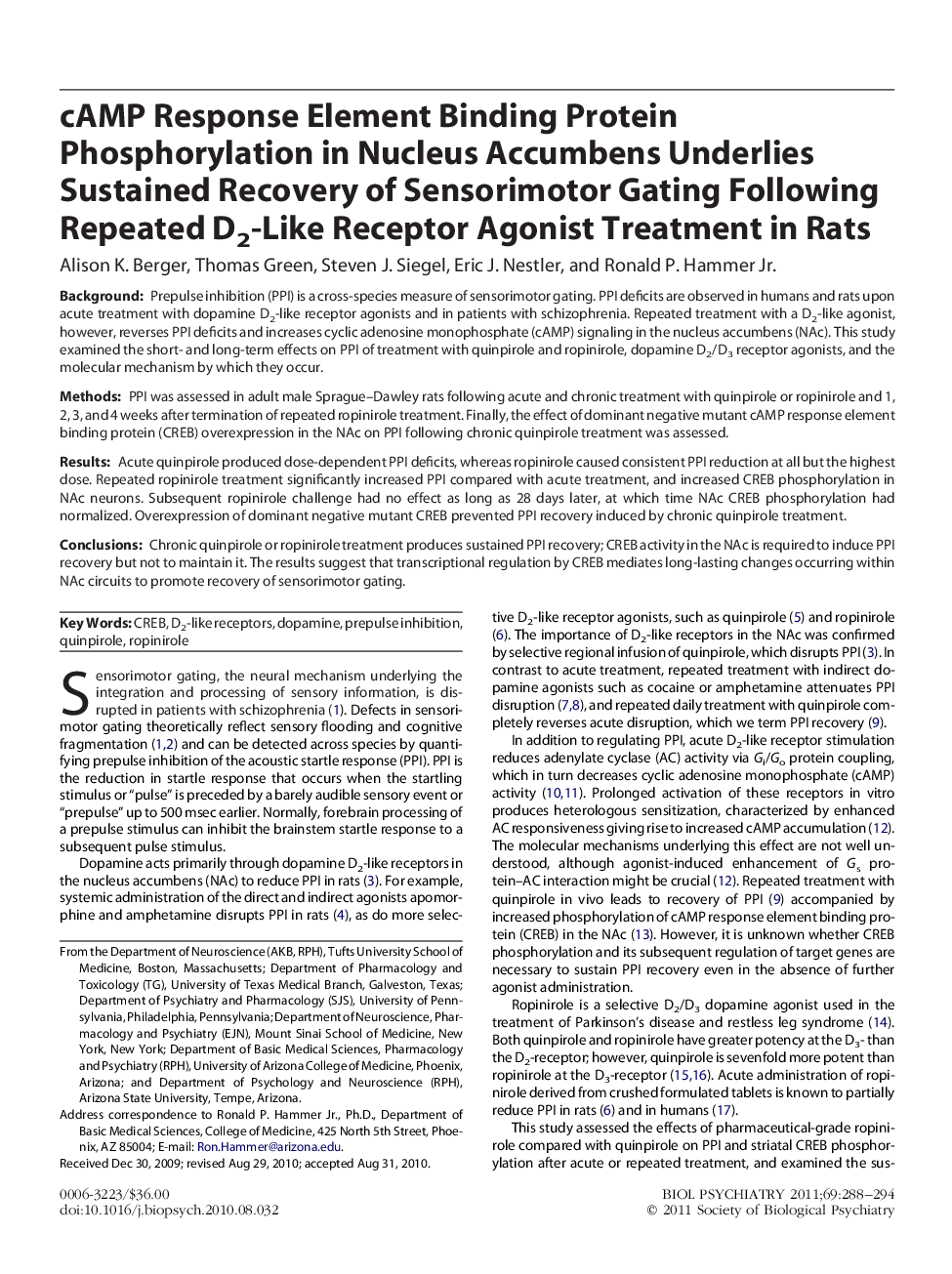| Article ID | Journal | Published Year | Pages | File Type |
|---|---|---|---|---|
| 4178941 | Biological Psychiatry | 2011 | 7 Pages |
BackgroundPrepulse inhibition (PPI) is a cross-species measure of sensorimotor gating. PPI deficits are observed in humans and rats upon acute treatment with dopamine D2-like receptor agonists and in patients with schizophrenia. Repeated treatment with a D2-like agonist, however, reverses PPI deficits and increases cyclic adenosine monophosphate (cAMP) signaling in the nucleus accumbens (NAc). This study examined the short- and long-term effects on PPI of treatment with quinpirole and ropinirole, dopamine D2/D3 receptor agonists, and the molecular mechanism by which they occur.MethodsPPI was assessed in adult male Sprague–Dawley rats following acute and chronic treatment with quinpirole or ropinirole and 1, 2, 3, and 4 weeks after termination of repeated ropinirole treatment. Finally, the effect of dominant negative mutant cAMP response element binding protein (CREB) overexpression in the NAc on PPI following chronic quinpirole treatment was assessed.ResultsAcute quinpirole produced dose-dependent PPI deficits, whereas ropinirole caused consistent PPI reduction at all but the highest dose. Repeated ropinirole treatment significantly increased PPI compared with acute treatment, and increased CREB phosphorylation in NAc neurons. Subsequent ropinirole challenge had no effect as long as 28 days later, at which time NAc CREB phosphorylation had normalized. Overexpression of dominant negative mutant CREB prevented PPI recovery induced by chronic quinpirole treatment.ConclusionsChronic quinpirole or ropinirole treatment produces sustained PPI recovery; CREB activity in the NAc is required to induce PPI recovery but not to maintain it. The results suggest that transcriptional regulation by CREB mediates long-lasting changes occurring within NAc circuits to promote recovery of sensorimotor gating.
